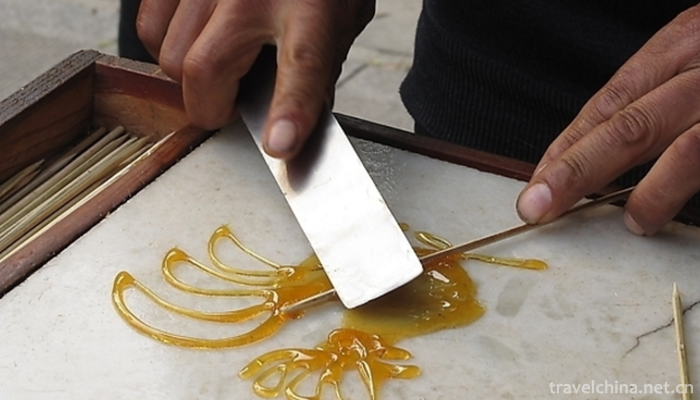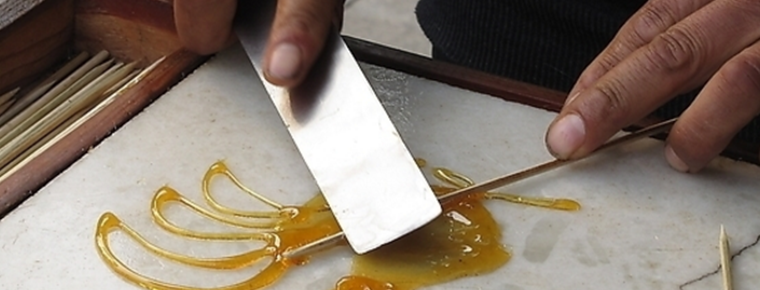Traditional skills
Traditional skills
Chinese traditional folk art is a craft inherited from Chinese folk, such as paper-cut is one of the most popular traditional folk decorative arts in China, with a long history. Because of its easy availability of materials, low cost, effectiveness, wide adaptability, various styles, vivid image and popular; more because it is most suitable for rural women leisure production, can be used as a practical object, but also beautify life. Paper-cut can be seen all over the country, even forming different local styles and schools. Paper-cut not only reflects the aesthetic preferences of the masses, but also contains the deep social psychology of the nation. It is also one of the most distinctive folk arts in China. Its shape characteristics are especially worth studying. As the embodiment of Chinese original philosophy, folk paper-cut has comprehensive, beautifying and auspicious characteristics in its form of expression. At the same time, folk paper-cut conveys the connotation and essence of traditional culture with its own specific expression language.
Traditional skill refers to a technology and skill with a long cultural and historical background, which can only be mastered through a certain in-depth study. Every skill bears the mark of the nation.
Chinese traditional skills include: Chinese Kungfu, acupuncture, massage, traditional Chinese medicine, tea ceremony, embroidery, paper-cut and so on.


-
2.Mount Jiuhua Scenic Area
Jiuhua Mountain Scenic Spot is located in Anhui Province, China. The northwest is across the Yangtze River and Tianzhu Mountain, and the Southeast
Time 2018-12-08 -
3.jingyuetan national forest park
Jingyuetan, National AAAAA Class Tourist Scenic Spot, National Scenic Spot, National Forest Park, National Civilized Scenic Spot Demonstration Site, National Water Conservancy Scenic Spot, National Na
Time 2018-12-26 -
4.Baishuizhai Scenic Area
Baishuizhai Scenic Spot is located in Paitan Town, Zengcheng District, with an area of about 170 meters. The Tropic of Cancer passes through it. It is known as the magnificent Emerald on the Tropic
Time 2019-01-02 -
5.The First Sangzi in Jialing
The first Sangzi of Jialing is located in Peng'an County, Sichuan Province. Peng'an is the home of Sima Xiangru, a great poet of the Han Dynasty. It is located in the northeast of Sichuan
Time 2019-01-21 -
6.Babao black rice porridge
Babao black rice porridge is a traditional snack and a food for Laba Festival. Purple and black, soft and waxy, sweet and fragrant. Developed from Babao glutinous rice porridge, it has the function of
Time 2019-03-25 -
7.Tone tune
Colour tune, commonly known as tune, colour tune, colour lantern, Na Hao Hey and so on, is one of the local operas in Guangxi. It belongs to the system of Lantern opera
Time 2019-04-04 -
8.Answer drum
Answer drums are popular in Quanzhou City, Fujian Province, other areas in southern Fujian Province and Taiwan Province, Hong Kong and Macao, as well as among overseas Chinese
Time 2019-04-22 -
9.Qiang Mu Zashrunbu Temple Shigatse
Qiang Mu is a religious dance, also known as "Dancing God". "Semochim Qiang Mu" is a Tibetan Buddhist Gru-sect Qiang Mu performed by monks at Zashrunbu Monastery in Xikaze, Tibet.
Time 2019-06-11 -
10.Calculation with an abacus
Liu Hong (129-210 A.D.), a character Zhuo, a descendant of Liu Xing, the king of Lu in the Eastern Han Dynasty, is an outstanding astronomer and mathematician in ancient China. He is the inventor of a
Time 2019-08-10 -
11.Zeng Bu
Zeng bu (November 3, 1036 - August 21, 1107), Zi Zi Xuan, Tai Chang, son of Yi Zeng, brother Zeng Gong of Zhong Shu Shu, the Prime Minister of the Northern Song Dynasty, and the important supporter of
Time 2019-09-15 -
12.Shicheng mountain
It is located in Shicheng mountain, Hengjiang Town, Xuzhou District, Sichuan Province. The total area is 5500 mu, including 4100 mu of forest. Shicheng mountain inclines from southwest to northeast. It has a good momentum
Time 2020-10-16